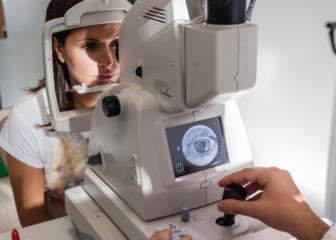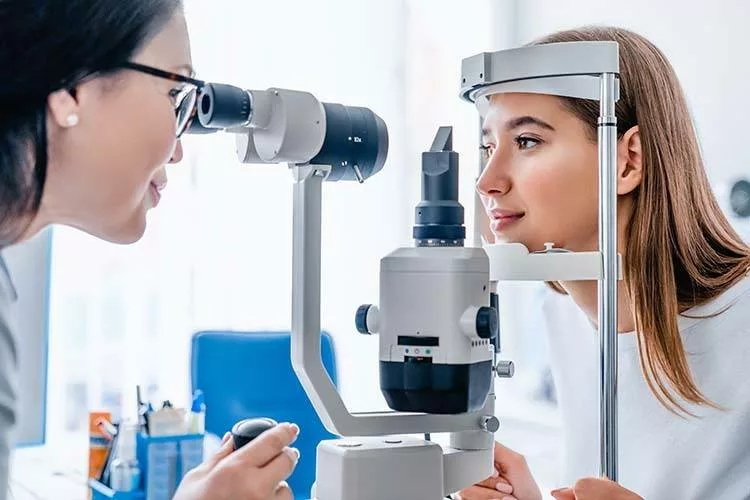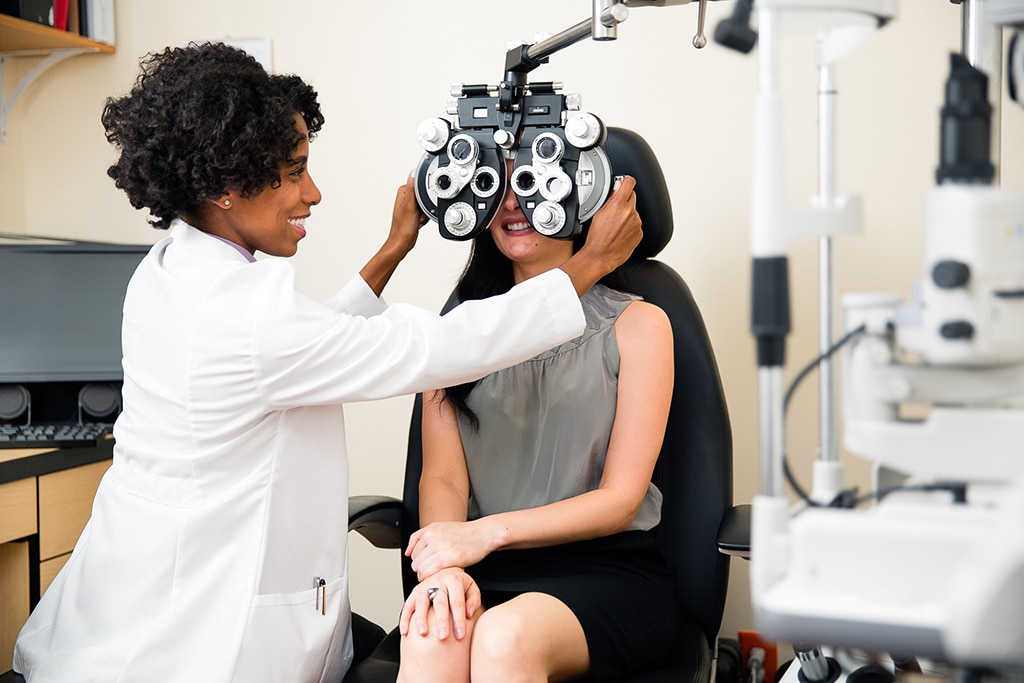Comprehending the Role of Your Eye Doctor in Maintaining Vision
Wiki Article
Exploring the current Technological Advancements in Optometry and What They Mean for Eye Doctors
In the ever-evolving area of optometry, recent technical developments are improving how practitioners approach eye care. From the precision of Optical Coherence Tomography to the nuanced understandings offered by AI-driven analysis tools, these innovations are setting new standards in individual analysis and treatment. Teleoptometry is poised to redefine availability, making certain that experience goes beyond geographical restrictions. As these developments permeate the method, eye doctors are confronted with the challenge of accepting these tools to improve patient end results. The question remains: how will these technological changes redefine the functions and responsibilities within the career?Innovations in Diagnostic Devices
Progressing the area of optometry, advancements in analysis devices have actually reinvented the means eye care professionals assess and detect eye problems and visual problems. The past decade has actually seen significant technical developments, enabling more precise and comprehensive examinations.An additional key innovation is the intro of advanced corneal topography systems, which map the surface area curvature of the cornea with precision. These devices are specifically advantageous for fitting get in touch with lenses and identifying corneal disorders. Electronic retinal imaging has actually transformed conventional ophthalmoscopy, offering in-depth, panoramic views of the retina that promote detailed aesthetic assessments.
The advancement of wavefront aberrometry has actually likewise been crucial, making it possible for the analysis of refractive mistakes with unparalleled precision (Eye Doctor Optometrist). This technology assists in tailoring restorative lenses and enhancing surgical results for refractive surgical procedures. Collectively, these analysis innovations encourage eye doctors to deliver remarkable individual care, making sure very early treatment and customized treatment approaches, inevitably boosting aesthetic health and wellness end results
AI in Individual Management
Building on the foundation of advanced diagnostic devices, the incorporation of expert system (AI) in individual administration represents a transformative leap for optometry. AI systems are progressively used to enhance efficiency, precision, and customization in individual care. By examining huge quantities of information, AI can determine patterns and predict prospective eye conditions, making it possible for optometrists to tailor interventions better. This capacity is vital in handling persistent eye diseases such as glaucoma and diabetic person retinopathy, where very early discovery and continuous surveillance are vital.Additionally, AI-driven platforms promote streamlined individual interactions and management procedures. Automated scheduling, virtual consultations, and customized follow-up strategies not just improve person complete satisfaction yet likewise enhance time monitoring for specialists. These systems can triage individuals based on the necessity of their problems, ensuring that those in important demand receive timely attention.
In addition, AI improves decision-making by providing eye doctors with evidence-based referrals and therapy pathways. By incorporating data from electronic wellness records, AI tools offer understandings that inform medical choices, minimizing the risk of errors and improving client end results. As AI remains to advance, its duty in person monitoring will likely expand, reshaping the landscape of optometric treatment.
Developments in Retinal Imaging
In the world of optometry, retinal imaging has observed remarkable technological innovations that are enhancing analysis capabilities and person treatment. Developments such as Optical Comprehensibility Tomography (OCT) and fundus photography have reinvented how optometrists examine the retina and imagine. OCT, specifically, offers high-resolution, cross-sectional photos of the retina, enabling the thorough exam of its layers. This capability is important for early detection her response and monitoring of conditions like glaucoma, diabetic retinopathy, and age-related macular degeneration.Enhanced imaging techniques like their website OCT angiography are more refining analysis precision. This non-invasive technique maps blood flow in the retina, offering vital insights right into vascular health without the requirement for dye shots. In addition, adaptive optics technology is being integrated right into retinal imaging systems to deal with eye aberrations, supplying unmatched picture quality. Such innovations facilitate the recognition of minute retinal changes that could symbolize disease development.
Moreover, developments in fabricated knowledge are boosting retinal imaging by enabling automatic evaluation of large datasets. These systems assist optometrists in recognizing patterns a measure of pathology, thus boosting analysis precision and effectiveness. Collectively, these advancements are changing retinal imaging right into a cornerstone of contemporary eye care, improving end results and increasing healing possibilities.
Teleoptometry's Expanding Function
Teleoptometry is significantly coming to be a crucial part of eye care, driven by developments in data and analysis devices. As optometry accepts electronic makeover, teleoptometry facilitates remote appointments, permitting optometrists to extend their solutions beyond typical limits. This is particularly helpful in rural and underserved locations where access to specialized eye care is frequently minimal. By leveraging high-resolution video conferencing and progressed retinal imaging, eye doctors can carry out extensive eye exams from afar, ensuring prompt medical diagnosis and treatment.The combination of fabricated intelligence (AI) additional boosts teleoptometry, allowing the evaluation of visual data and aiding in the discovery of ocular problems such as glaucoma and diabetic person retinopathy. AI-powered formulas can rapidly analyze complex imaging information, giving optometrists with beneficial understandings that strengthen medical decision-making.
Furthermore, teleoptometry supports continuity of care through seamless assimilation with electronic health records (EHRs), permitting optometrists to maintain extensive patient histories. When seeking advice from with various professionals., this guarantees that clients get regular and personalized care even.
In spite of these advantages, challenges continue to be, including making certain information safety and taking care of client expectations. Teleoptometry represents a considerable stride towards more available, effective, and patient-centered eye treatment. As technology develops, its role is positioned to broaden further.

Future Patterns in Eye Care
A myriad of cutting-edge patterns is set to reshape the future of eye care, driven by technical advancements and the progressing requirements of people. One considerable fad is the assimilation of expert system (AI) in diagnostics, which assures to boost the precision and efficiency of look at these guys eye examinations. AI formulas can examine huge amounts of data from retinal images, possibly spotting problems like diabetic retinopathy and glaucoma earlier than conventional techniques.Furthermore, tailored medication is obtaining traction in optometry, with hereditary testing informing customized treatment strategies. This method aims to optimize person outcomes by customizing treatments to private genetic accounts. Wearable innovation, such as clever contact lenses, is also on the perspective, offering real-time monitoring of intraocular stress or sugar degrees, thus giving constant insights into systemic and eye health and wellness.
The fostering of augmented truth (AR) and virtual reality (VR) in training and person education is another arising trend. These innovations provide immersive experiences that can boost understanding and abilities both for eye doctors and clients. As these trends evolve, optometrists should stay abreast of technical innovations to provide sophisticated treatment, making certain improved person end results and contentment in the dynamic landscape of eye care.
Conclusion

Jointly, these diagnostic advancements equip eye doctors to provide superior person treatment, ensuring early treatment and tailored treatment strategies, eventually improving visual wellness end results.

As these innovations proceed to evolve, eye doctors have to adjust and incorporate them into method, eventually maximizing process efficiency and elevating the standard of eye care delivered to people.
Report this wiki page